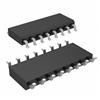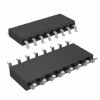MC33388: Features: • Very low sleep/standby current (15mA typical)• Baud rate from 10 kBaud up to 125kBauds• Automatic switching to single wire mode in case of bus failures and return to di...
floor Price/Ceiling Price
- Part Number:
- MC33388
- Supply Ability:
- 5000
Price Break
- Qty
- 1~5000
- Unit Price
- Negotiable
- Processing time
- 15 Days
SeekIC Buyer Protection PLUS - newly updated for 2013!
- Escrow Protection.
- Guaranteed refunds.
- Secure payments.
- Learn more >>
Month Sales
268 Transactions
Payment Methods
All payment methods are secure and covered by SeekIC Buyer Protection PLUS.

 MC33388 Data Sheet
MC33388 Data Sheet







